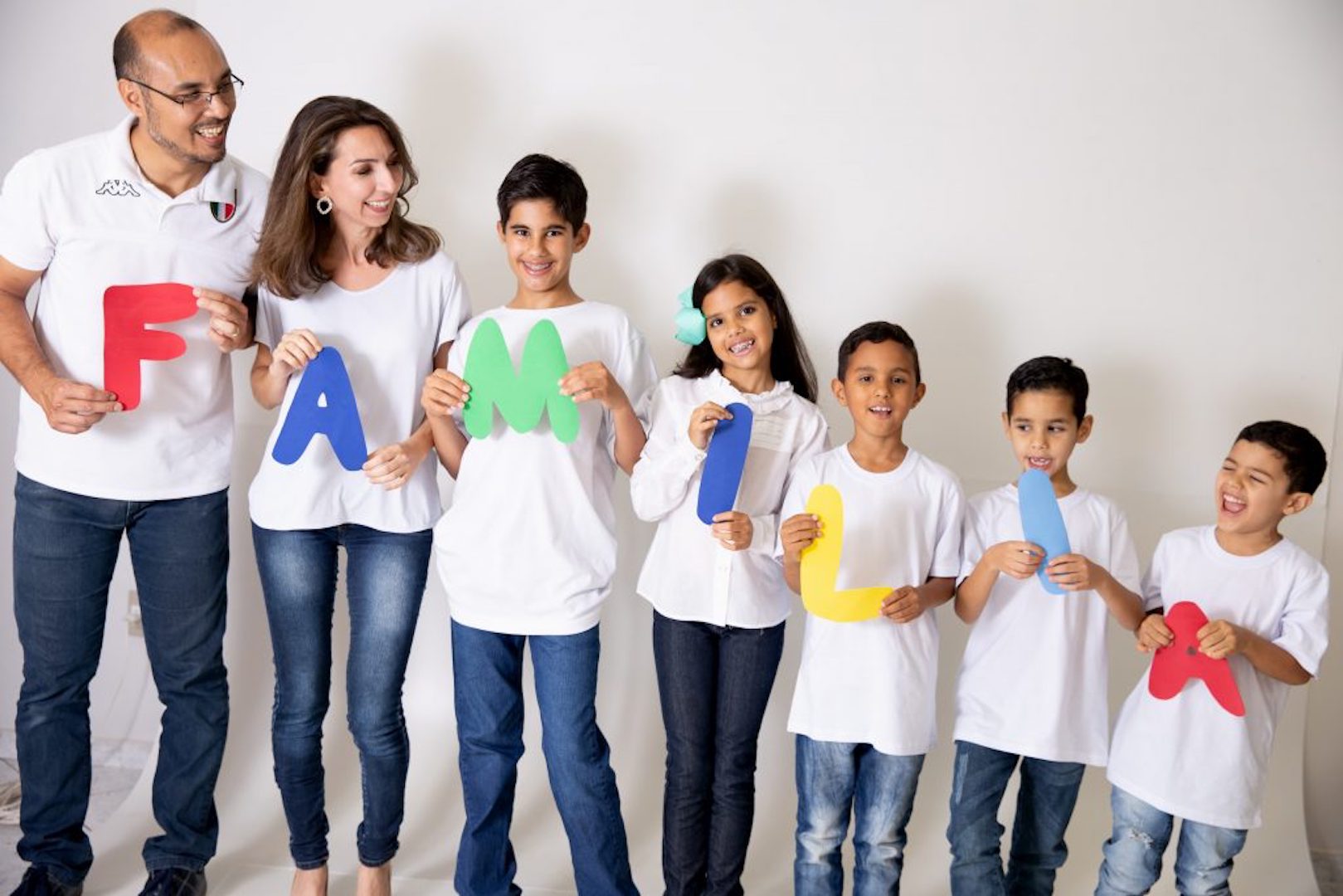SÃO PAULO, BRAZIL – Sometimes, those who want to adopt in Brazil have only a name, a number and scarce information about the child. This is how children and teenagers today are identified in the National Adoption Registry (CNA) in Brazil. This, say experts, makes the adoption process very difficult in the country.
Now several Brazilian states have created Apps for these families to have a more direct contact with children awaiting adoption, especially the older ones.

According to data from the Brazil’s Justice Council (CNJ), there are today approximately 9,500 children registered in the National Adoption Registry (CNA) but only 5,000 are actually eligible for adoption.
The line for those waiting to adopt a child in Brazil, on the other hand, is over 46,000. Since the number of applicants to adopt is much larger than the number of children eligible for adoption, one would assume that all these children would find homes. The reality, however, is very different.
Sometimes placing a minor with a prospective parent is difficult. When the child is over eight years old, has siblings, or has a disease or disability, she is usually passed over by the vast majority of adopters.
“The Brazilian family interested in adopting still has a preference for children up to three years old; but most of the boys and girls available for adoption are past this age,” says the Uberlândia, Minas Gerais Child and Youth Court judge, José Roberto Poiani, to local daily O Tempo. According to Poiani, as the age of the child increases, the chances of a family showing interest decreases.
Data from CNJ shows that there is a profile that is sought by those seeking to adopt: 14.55 percent only want to adopt white children; 58 percent accept only children up to four years old; 61.92 percent do not adopt siblings; and 61 percent only accept children without any disease or disability.
The problem is that the profile of those children waiting to be adopted is vastly different. Of the total of 9,500 children and adolescents registered at the CNA, 49.79 percent are brown, while only 16.68 percent are white; 55.27 percent also have siblings waiting to be adopted and 25.68 percent have some health problem. In addition, 53.53 percent are between 10 and 17 years old.
“People who want to adopt, who are waiting in line, want children with different profiles than those we have,” notes Iberê de Castro, judge of the Child and Youth Court of Guarulhos, located in the São Paulo metropolitan area.
To help unite these hard-to-place children with prospective adoptive parents, some state governments have implemented mobile applications (Apps) to make the ‘connection’ easier.
In May of 2018, for example, the Paraná state court created the A.DOT application. The platform promotes connections between adoption applicants and children and adolescents waiting for a family, by providing a more detailed profile, and even videos, of these children who have little chance of being adopted.

“We wanted something that would give visibility to these teenagers and children who did not find adoptive parents,” explains Sérgio Luiz Kreuz, a Paraná state assistant judge and one of the project’s creators.
According to Kreuz the A.DOT was inspired on relationship apps.
“We thought that this could work, because, to the extent that we could put videos with more detailed information about the child or adolescent who could be adopted, there would be more interest, and that’s exactly what happened,” says Kreuz.
Kreuz notes however, that all the contents of the children and adolescents’ profiles – photos, videos and texts – are only available on the platform after evaluation and authorization of the responsible magistrate. The information is also only released to qualified applicants, adoption support groups, and members of the judiciary and prosecutor’s office.
“This is a way of trying to reach people who are waiting for the opportunity to start a family,” he says.
Since its release, there have been over 10,000 downloads and access requests for the app.
A.DOT is not the only APP available in Brazil for those seeking to adopt older children.
In Rio Grande do Sul, “Adoção” was created through a partnership with the state public prosecutor’s office and students of the Catholic University of Rio Grande do Sul (PUCRS), with the objective of facilitating a meeting between children and teenagers who are waiting for a home and couples willing to adopt.
“This initiative allows us to do something for society. We all exist, whether government or university, to generate positive things for society, in which we are inserted. And for this very important cause that is our childhood, it can answer for the future of our country if it is supported, welcomed and developed,” says Judge Luiz Felipe Silveira Difini.
“It is an app developed by our students that contributes to changing the lives of these children and adolescents, and many families,” adds PUCRS Dean of Research, Innovation and Development, Carla Denise Bonan.
In the state of Espirito Santo a project called “Esperando por Voce” (Waiting for You) has been in place since 2017, and encourages the adoption of older minors. Like the courts in Rio Grande do Sul, the Espirito Santo legal system seeks, through videos, to bring the relationship between children and future parents closer, encouraging these families to expand the characteristics of the profiles they seek.

According to the Court, the program is specifically aimed at older children, sibling groups and those with a disability or special health condition. According to data from the courts, in October 2018, at least 100 children and adolescents were available for adoption throughout the state. At the same time, 924 suitors were qualified to adopt.
Since Esperando por Voce was launched, 31 children and adolescents have participated in the initiative, and seven of them (all over the age of 12) are already living with their new families.
To try to decrease the number of older children waiting to be adopted, Brazil’s federal government is also implementing new programs. Through the CNJ, at the beginning of October, it launched the new National Adoption and Reception System (SNA) – a platform that promises to optimize the adoption process of children and adolescents.
Among its features, the new system will automatically search on a daily basis for prospective adopted parents for children and adolescents eligible for adoption.

